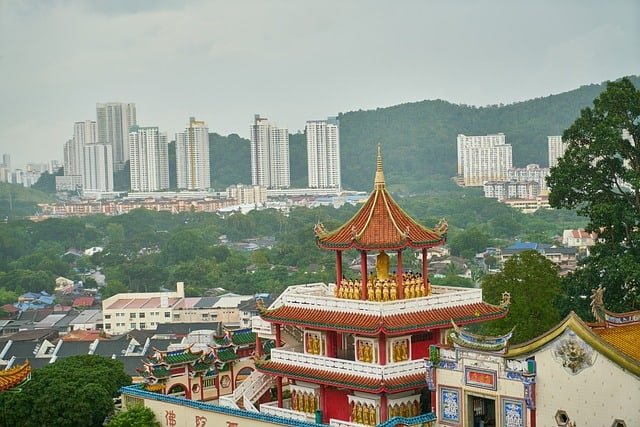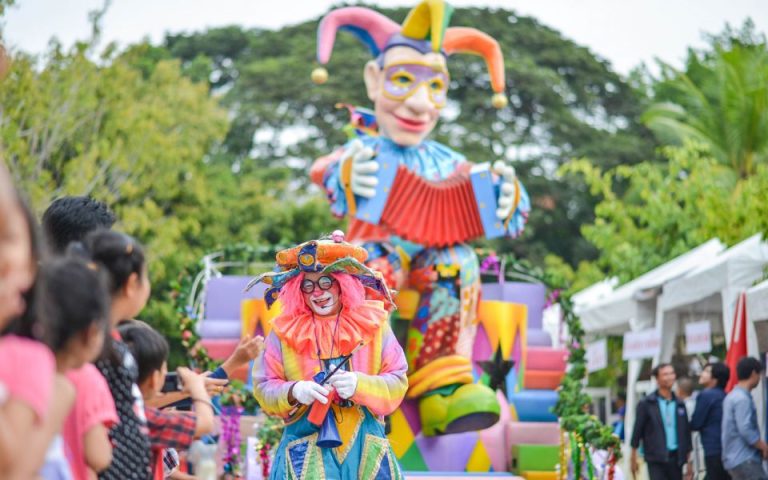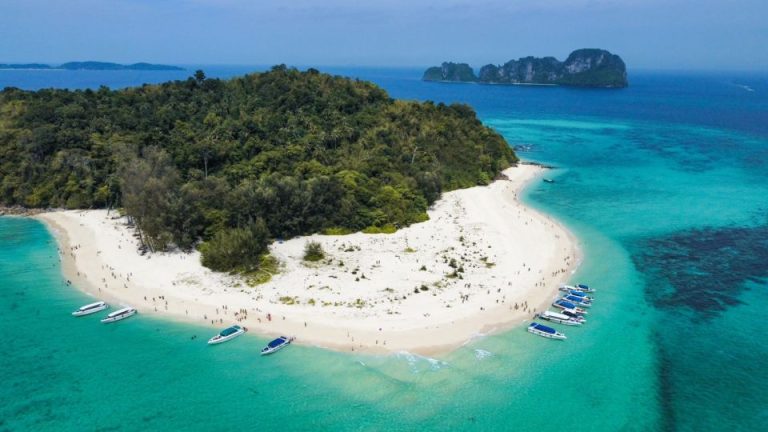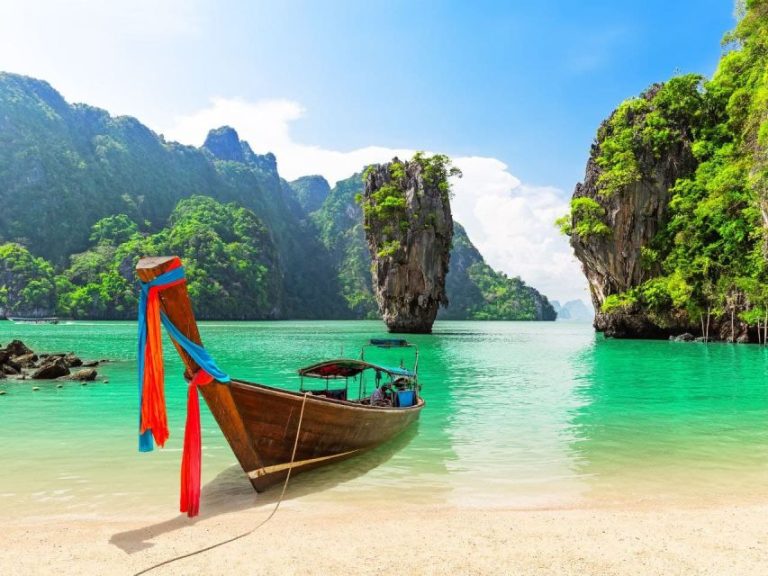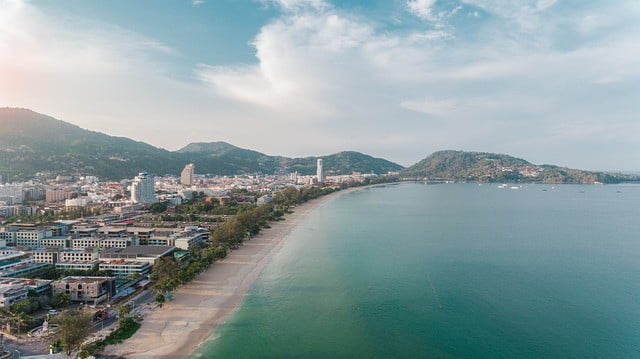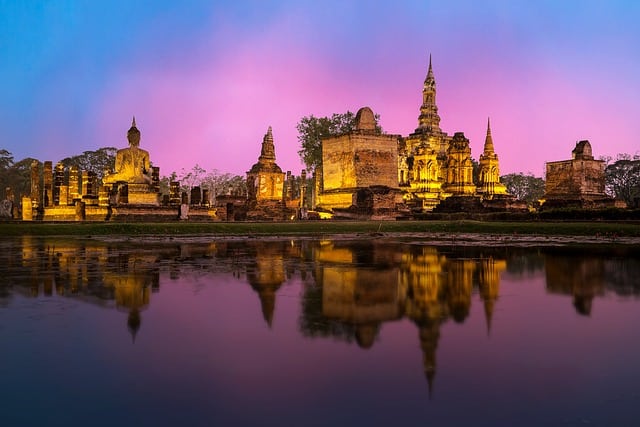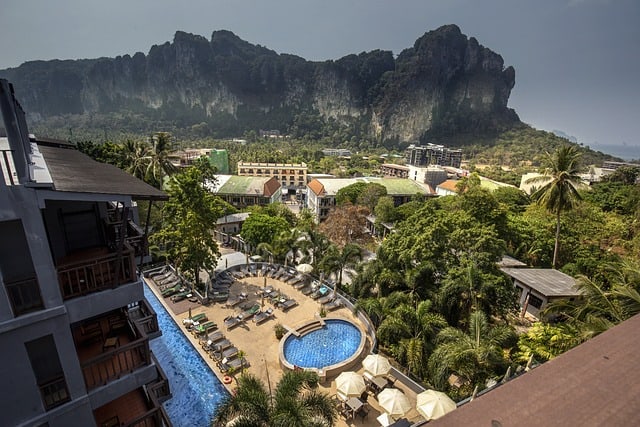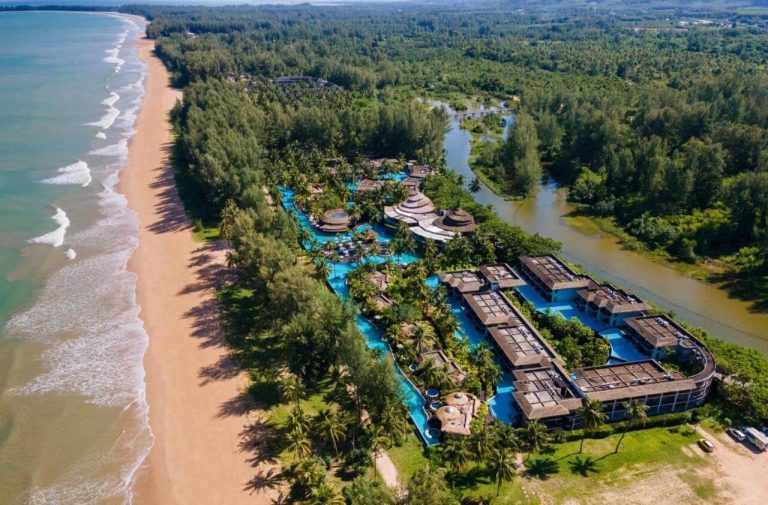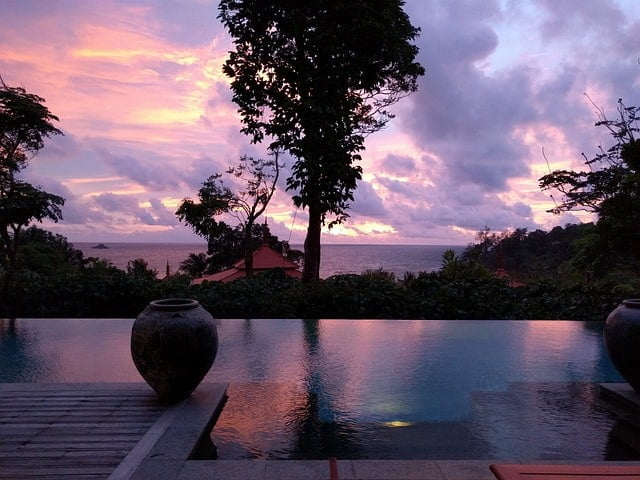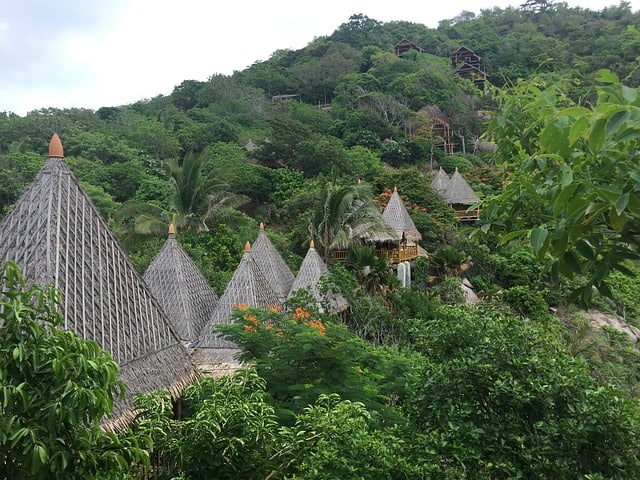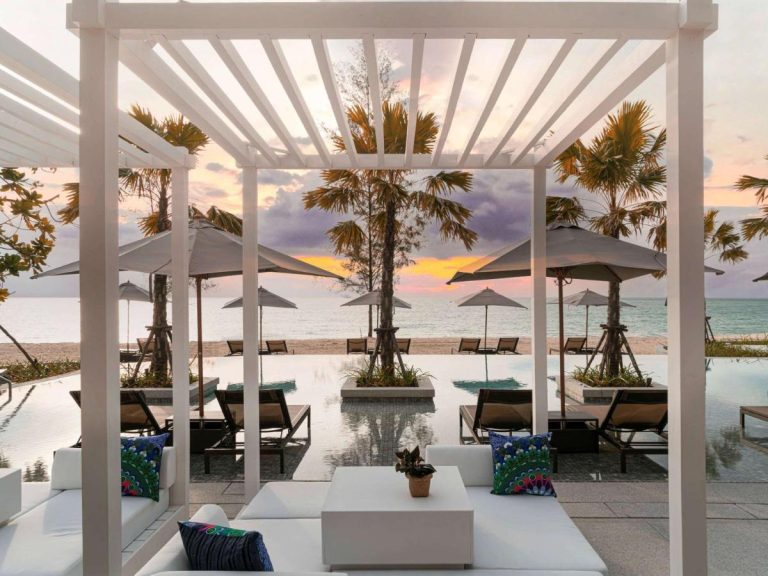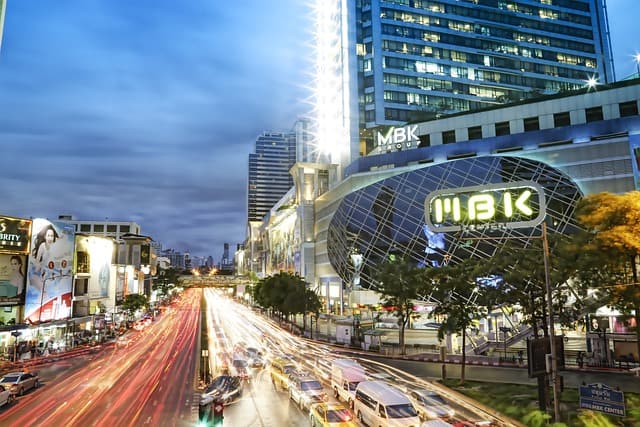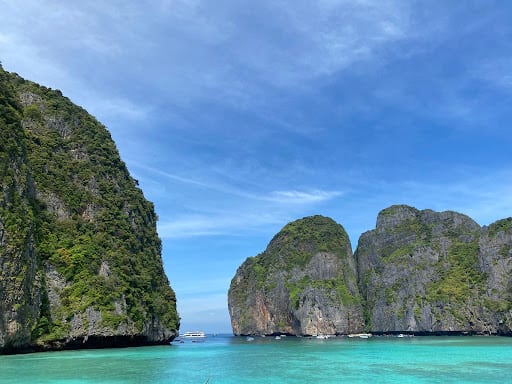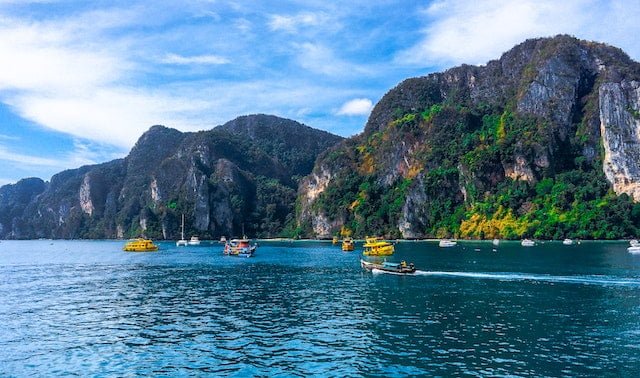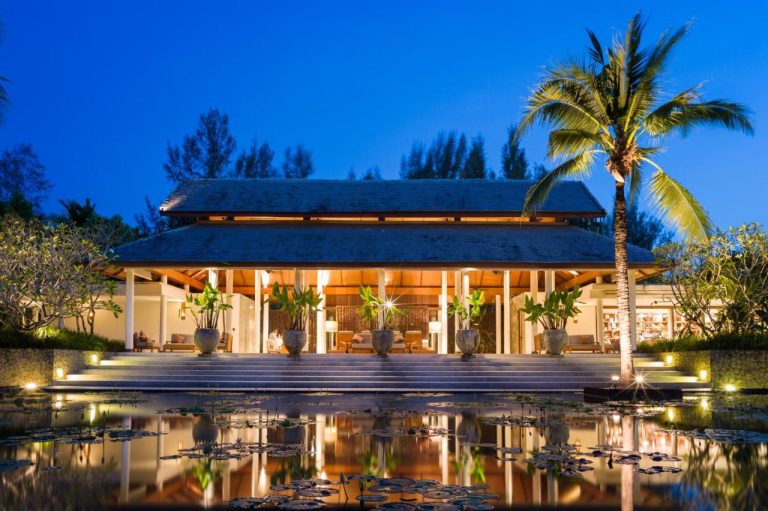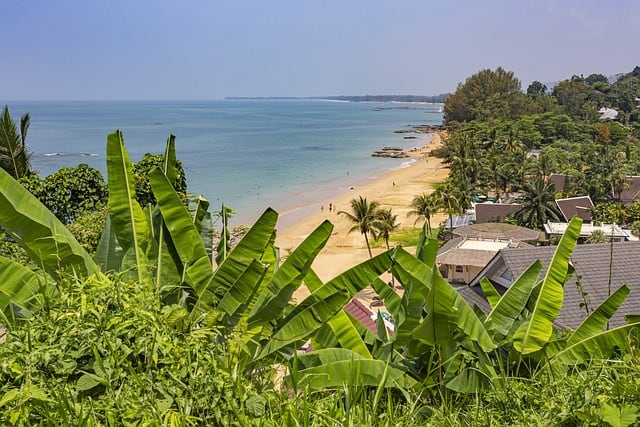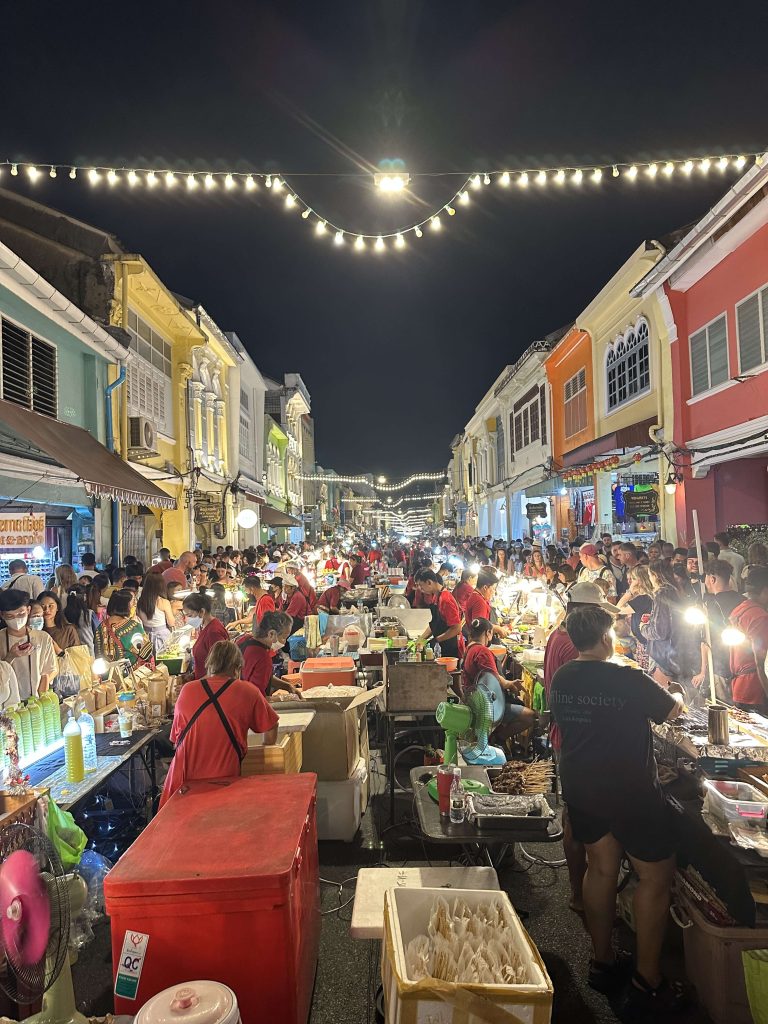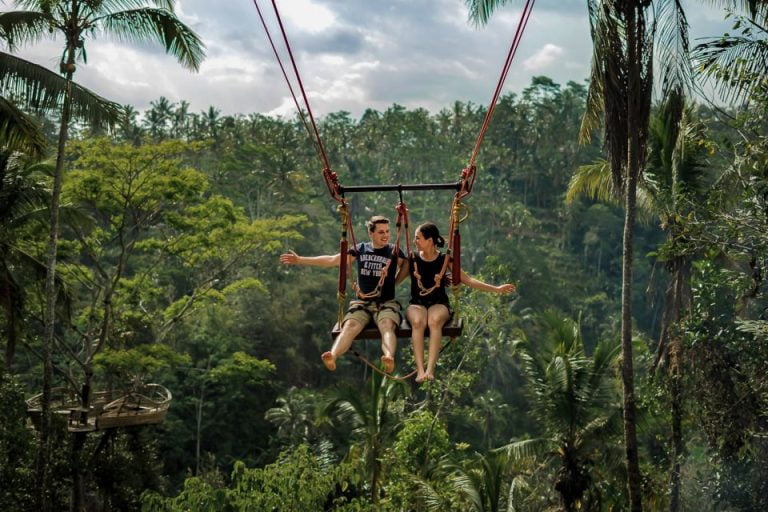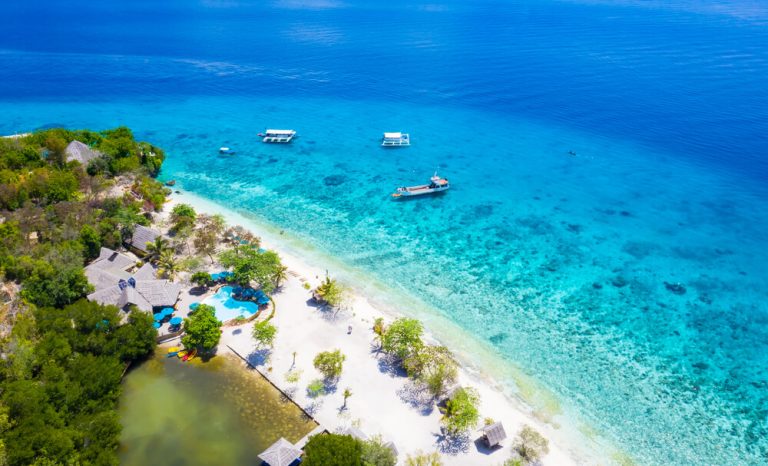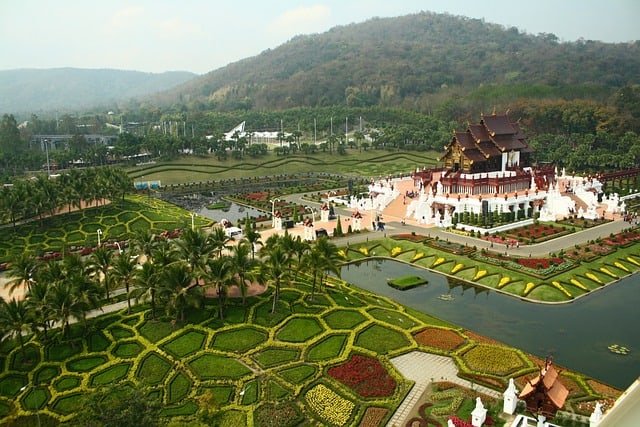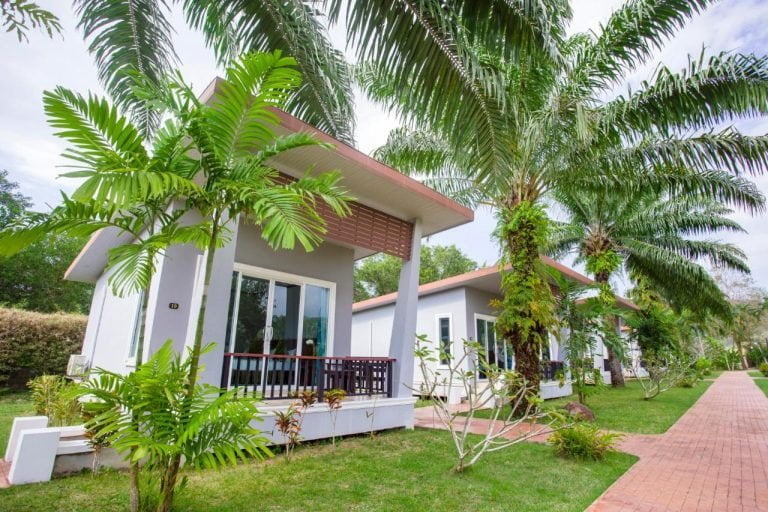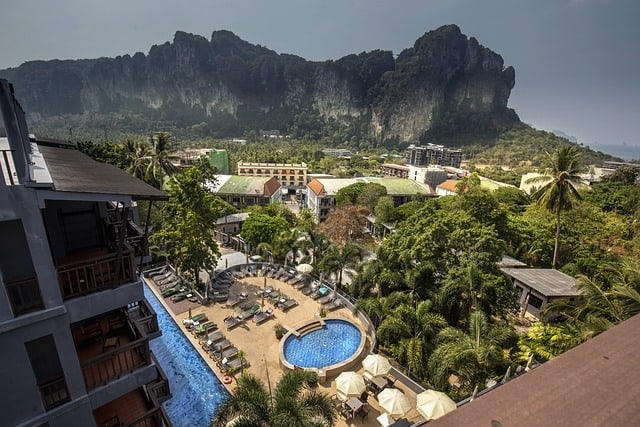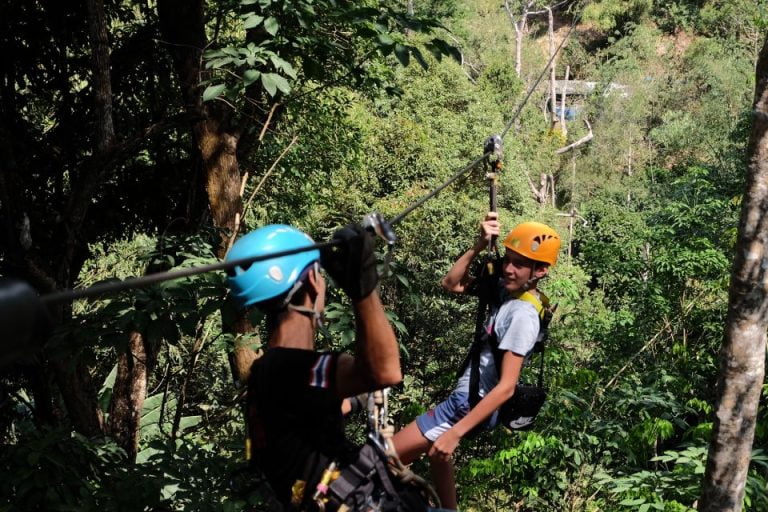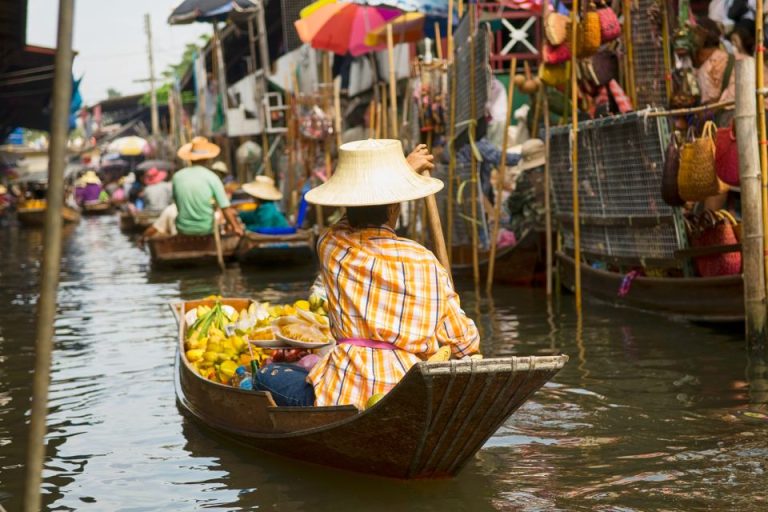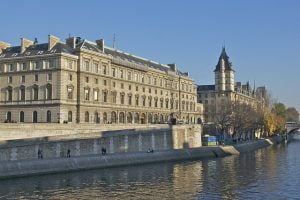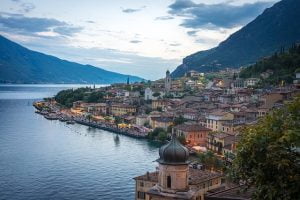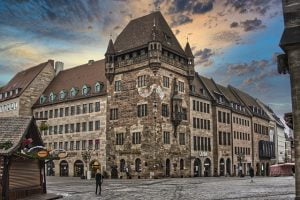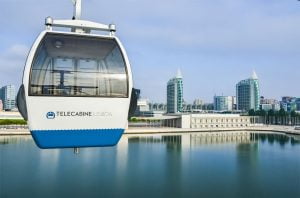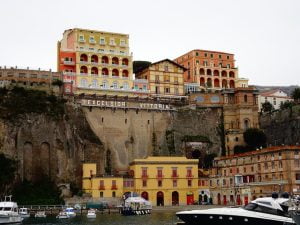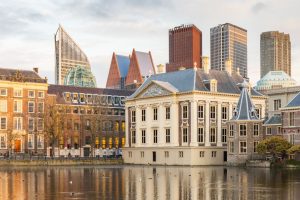Planning a trip to the Far East - how to plan a trip to East Asia and Southeast Asia? how much does it cost? Which countries are recommended to visit? Weather? Attractions and tourist sites? Comprehensive information for travelers!
Discover the wonders of East and Southeast Asia in this comprehensive travel guide. Learn how to plan your trip, estimate costs, choose the best countries to visit and make the most of the area's weather, attractions and tourist sites.
Introduction: Embark on your Far Eastern adventure
Are you ready for an adventure in the Far East? East Asia and Southeast Asia are home to some of the most vibrant and diverse cultures in the world, filled with stunning landscapes, bustling cities and ancient traditions. Whether you're looking for the tranquility of a remote beach, the excitement of a bustling metropolis, or the mystique of a holy temple, the Far East has it all.
Planning a trip to this area can be overwhelming, but with a little research, you can make the most of your trip. From budget to choosing the right countries to visit, there are many factors to consider before embarking on an adventure in the Far East.
In this blog post, we will provide comprehensive information for travelers interested in exploring the Far East. We'll cover everything from the best time to visit, top tourist attractions and sites, transportation options, and more. Whether you are a seasoned traveler or planning your first international trip, this guide will help you plan an unforgettable trip.
How to start planning the trip?
Planning a trip to the Far East can be overwhelming, but with a little preparation, you can get the most out of your trip. The first step in planning your trip is deciding what you want to see and do. Are you interested in exploring bustling cities or relaxing on a tropical beach? Do you want to learn about ancient cultures or experience modern technology? Once you have a general idea of what you want to do, you can start researching destinations that fit your interests.
The next step is to decide on your budget. How much can you afford to spend on your trip? Keep in mind that the cost of living in some Far Eastern countries may be much lower than what you're used to, but transportation and accommodation costs can add up quickly. Once you have a budget in mind, you can start researching flight, accommodation and transportation options.
When it comes to booking flights, it's best to book early to get the best deals. Use sites like Skyscanner or Expedia to compare prices from different airlines. Be aware of layovers and total travel time, as these factors can affect your overall experience.
Accommodation options in the Far East range from luxury hotels to low-budget hostels. Sites like Booking.com and Airbnb offer a wide variety of options to fit any budget. Remember that location is key, especially in cities where traffic can be a challenge. Look for accommodation near public transport or within walking distance of major attractions.
Budget for your trip: How much will it cost?
When planning a trip to the Far East, it is important to set a budget in advance. The cost of living and traveling in this area can vary greatly depending on the country and the level of luxury you are looking for. Here are some factors to consider when setting the budget for your trip:
- 1. Flight ticket: The cost of the flight can be a significant expense when traveling to the Far East. Prices can vary greatly depending on the time of year and the airline you choose. To save money, consider traveling off-season or booking a connecting flight instead of a direct flight.
- 2. Accommodation: The cost of accommodation can also vary greatly depending on the country and the type of accommodation you choose. Cheap hostels and hotels are available in many countries and can be a great way to save money. For those looking for luxury, the area also has plenty of luxury hotels and resorts.
- 3. Food and drink: The cost of food and drink can be quite affordable in some countries, but more expensive in others. Street food is a popular and affordable option in many countries, while dining in high-end restaurants can be quite expensive. Be sure to research local foods and dining options beforehand to get an idea of what to expect.
- 4. Activities and trips: Activities and excursions can be a significant expense when traveling in the Far East. Entrance fees to popular attractions can add up quickly, so be sure to plan your itinerary in advance and budget accordingly. Look for free or low-cost activities, such as visiting local markets or hiking in national parks.
- 5. Transportation: Shipping costs can vary greatly depending on the country and the means of transportation you choose. Public transport is often the most affordable option, while taxis and private drivers can be more expensive. Consider renting a car or scooter if you plan to travel outside the major cities.
Choosing the right countries: where should you go?
When planning a trip to the Far East, it is important to consider which countries you want to visit. The area is home to a wide variety of cultures, landscapes and attractions, so it's important to do your research in advance to decide which destinations are right for you. Here are some countries that you should consider when planning your trip to the Far East:
- 1. Japan: Japan is a must-see destination for many travelers, with its unique blend of ancient traditions and modern technology. From the bustling streets of Tokyo to the peaceful temples of Kyoto, Japan has something for everyone.
- 2. China: China is a vast and diverse country, with a rich history and culture. Visitors can explore the Great Wall, the Terracotta Warriors and the Forbidden City, as well as enjoy the vibrant cities and delicious cuisine.
- 3. South Korea: South Korea is a hidden gem in the Far East, with a vibrant culture and stunning landscapes. Visitors can explore the bustling streets of Seoul, hike the mountains, and soak in natural hot springs.
- 4. Thailand: Thailand is a popular destination for backpackers and luxury travelers alike, with its beautiful beaches, delicious food and friendly people. Visitors can explore the bustling streets of Bangkok, relax on the beaches of Phuket and visit ancient temples throughout the country.
- 5. Vietnam: Vietnam is a country with a rich history and stunning natural beauty. From the bustling streets of Hanoi to the peaceful rice fields of Sapa, there is something for everyone in Vietnam.
- 6. Cambodia and Laos: Cambodia and Laos are often overlooked by travelers, but they offer plenty of cultural and natural attractions. Visitors can explore the ancient temples of Angkor Wat, hike the jungles of Laos and relax on the beaches of Cambodia.
- 7. Indonesia and Malaysia: Indonesia and Malaysia are both home to incredible natural beauty, from the beaches of Bali to the rainforests of Borneo. Visitors can also explore the vibrant cities of Jakarta and Kuala Lumpur.
Weather Navigation: When is the best time to travel?
When planning a trip to the Far East, it is important to take into account the weather conditions in the countries you want to visit. The region experiences a variety of climates, from tropical to subarctic, so it's important to choose the right time of year to get the most out of your trip.
In general, the best time to visit the Far East is during spring (March to May) or autumn (September to November), when temperatures are mild and rainfall is relatively low. This is especially true for countries like Japan and South Korea, which can be hot and humid in the summer and cold and snowy in the winter.
For countries like Thailand and Indonesia, which have tropical climates, the best time to visit depends on the monsoon season. The dry season (November to April) is the best time to visit these countries, as the amount of precipitation is low and the temperatures are comfortable. However, this is also peak tourist season, so expect higher prices and larger crowds.
Vietnam and Cambodia have a similar climate, with a dry season from November to April and a rainy season from May to October. The best time to visit is in the dry season, when temperatures are cooler and rainfall is less.
Exploring East Asia: China, Japan and South Korea
East Asia is a region full of rich history, culture and traditions. China, Japan and South Korea are three countries that are mandatory destinations for anyone planning a trip to the Far East.
China is the most populous country in the world and boasts a rich cultural heritage dating back thousands of years. From the Great Wall to the Forbidden City, there are plenty of iconic landmarks to explore. China is also home to some of the tastiest cuisine in the world, including dumplings, noodles and Peking duck.
Japan is known for its unique combination of ancient traditions and modern technology. Tokyo, the capital city, is a bustling metropolis full of neon lights, skyscrapers and street food. But there is more to Japan than just the cityscape. Visitors can also explore ancient temples, soak in hot springs, and marvel at the beauty of cherry blossom season.
South Korea is a country that has undergone rapid modernization in recent decades, but it still retains its rich cultural heritage. Visitors can explore ancient palaces and temples, taste delicious Korean cuisine, and indulge in the country's famous beauty products. South Korea is also home to some of the best K-pop music and K-dramas in the world, which have gained a global following in recent years.
One of the best ways to experience East Asia is a tour that covers several countries. This allows visitors to see the similarities and differences between the cultures and traditions of each country. It also makes it easier to navigate the different languages and customs of the region.
"Land of the Rising Sun": What makes Japan a must-visit?
Japan is a country steeped in tradition and culture, which makes it a must-see destination for anyone planning a trip to the Far East. Japan, known as the "Land of the Rising Sun", is a unique combination of ancient traditions and modern technology. From the bustling streets of Tokyo to the peaceful gardens of Kyoto, there is something for everyone in this fascinating country.
One of the things that attracts visitors to Japan is its rich history and culture. The country is home to many temples, shrines and palaces dating back hundreds of years. Visitors can explore the ancient city of Kyoto, famous for its traditional architecture and stunning gardens. Or they can visit the city of Hiroshima, which has a poignant history as the site of the first atomic bomb.
Japan is also famous for its food, known for its fresh ingredients and unique flavors. Visitors can taste sushi, ramen and tempura in traditional restaurants or at street vendors. The country is also known for its tea culture, which has been an integral part of Japanese life for centuries.
Another reason to visit Japan is its modern technology and innovation. The country is home to some of the world's most advanced technologies, from high-speed trains to robotic assistants. Visitors can explore the bustling city of Tokyo, which is a hotbed of innovation and creativity. They can also visit the Sony Building, which showcases the latest in technology and entertainment.
South Korea: A combination of tradition and modernity
South Korea is a fascinating country that offers a unique combination of tradition and modernity. From its bustling cities to its ancient temples, there is something for everyone in this vibrant and dynamic country.
- 1. Exploring the cities:South Korea's cities are hotbeds of activity and innovation, with modern skyscrapers towering over ancient temples and palaces. Visitors can explore the bustling streets of Seoul, the nation's capital, known for its high-tech buildings and bustling shopping districts. They can also visit the city of Busan, famous for its beaches and seafood.
- 2. The discovery of history:South Korea has a rich cultural heritage, with many temples, palaces and museums offering a glimpse into the country's past. Visitors can explore the ancient city of Gyeongju, which is home to many historical sites, including the UNESCO-listed Bulguksa Temple. They can also visit the Korean Folk Village, which offers a fascinating look into traditional Korean life.
- 3. The food sample:South Korea is famous for its delicious and unique cuisine, characterized by its bold flavors and use of spices. Visitors can taste traditional foods such as bibimbap, kimchi and bulgogi at local restaurants or at street vendors. They can also try Korean barbecue, which is a popular cooking style where diners grill themselves at the table.
Uncovering China's rich history
China is one of the oldest civilizations in the world, with a rich and complex history spanning 5,000 years. From the ancient dynasties to today's communist government, China has played a significant role in shaping the world we live in today.
One of the best ways to explore China's history is by visiting the many historical sites and landmarks. The Great Wall of China is perhaps the country's most iconic attraction, spanning 13,000 miles and dating back to the 7th century BC. Other must-sees include the Forbidden City in Beijing, the Terracotta Warriors in Xi'an and the ancient city of Pingyao.
In addition to its historical sites, China is also home to many museums that offer a glimpse into the country's past. The National Museum of China in Beijing is one of the largest museums in the world, with over 1.4 million exhibits showcasing China's culture and history. The Shanghai Museum is another must-see, with a collection of over 120,000 objects dating back to the Neolithic period.
China's history is also reflected in its art, literature and philosophy. Visitors can explore the country's traditional art forms such as calligraphy, painting and pottery, which have been passed down through generations. Chinese literature is also rich and diverse, with works such as "Journey to the West" and "Dream of the Red Chamber" still celebrated today.
Southeast Asia: A Tapestry of Cultures
Southeast Asia is a region known for its diverse cultures, traditions and landscapes. The region consists of 11 countries, each with its own unique history and heritage. The countries that make up Southeast Asia include Thailand, Vietnam, Cambodia, Laos, Myanmar, Malaysia, Indonesia, the Philippines, Brunei, Singapore and Timor-Leste.
One of the things that makes Southeast Asia unique is its cultural diversity. The region is home to over 600 million people, and each country has its own unique cultural identity. The languages, religions, customs and traditions vary greatly from one country to another, making it an exciting and diverse destination for travelers.
The culture of the region is heavily influenced by its history, characterized by a long period of colonization and trade. The influences of Indian, Chinese and European cultures can be seen in the architecture, cuisine and customs of the region.
Southeast Asia is also known for its natural beauty, with stunning landscapes ranging from pristine beaches to lush rainforests. The area is home to some of the most beautiful beaches in the world, such as the islands of Bali and Phuket.
One of the best ways to experience the diverse culture and natural beauty of Southeast Asia is by exploring its many attractions and tourist sites. Some of the must-see sites include the Angkor Wat temple complex in Cambodia, Halong Bay in Vietnam and Borobudur Temple in Indonesia.
Thailand: the land of smiles
Thailand is one of the most popular tourist destinations in Southeast Asia, known for its beautiful beaches, ancient temples and vibrant culture. Located in the heart of the region, the country is often referred to as the "Land of Smiles" due to the friendly and welcoming nature of its people.
The capital city of Thailand, Bangkok, is a bustling metropolis that offers visitors a mix of modernity and tradition. The city is home to some of the country's most famous attractions, such as the Grand Palace, Wat Phra Kaew and the famous Khao San Road.
Beyond Bangkok, Thailand is home to some of the most beautiful beaches in the world. The islands of Phuket, Koh Samui and Krabi are popular tourist destinations, offering visitors the chance to relax on white sandy beaches and swim in clear waters.
Thailand is also known for its delicious cuisine, which is a mixture of flavors and spices from all over the region. Some of the must-try dishes include Pad Thai, Tom Yum Gong and Green Curry.
One of the best things about Thailand is its affordability. The country offers visitors a variety of low-budget accommodation options, from hostels to luxury resorts. Food and transportation are also relatively cheap, making it an ideal destination for travelers on a budget.
Thailand's culture is heavily influenced by Buddhism, with stunning temples and shrines scattered throughout the country. One of the most famous is Wat Phra That Doi Suthep in Chiang Mai, which offers stunning views of the surrounding hills.
Experience the magic of Vietnam
Vietnam is a country that truly has something for everyone. From the bustling cities of Hanoi and Ho Chi Minh City to the beautiful countryside and stunning coastline, Vietnam offers visitors a unique and unforgettable experience.
One of the most popular destinations in Vietnam is the ancient city of Hoi An, located on the country's central coast. The city is known for its beautiful architecture, lively markets and delicious food. Visitors can explore the city's historic old town and take a boat ride on the Thu Bon River.
Another must-visit destination in Vietnam is Halong Bay, a stunning UNESCO World Heritage Site located in the northeast of the country. The bay is home to thousands of limestone islands and islets, and visitors can take a boat tour to explore the hidden caves and lagoons.
For those interested in history, Vietnam has a rich cultural heritage dating back thousands of years. The ancient city of Hue, located in central Vietnam, was the imperial capital during the Nguyen Dynasty and is home to several historical sites, including the Imperial City and Tu Duc Tomb.
Vietnam is also known for its delicious cuisine, which is a mixture of flavors and ingredients from all over the region. Some of the must-try dishes include pho, banh mi and banh cha.
One of the best things about Vietnam is the warmth and hospitality of its people. Visitors can experience this firsthand by staying in a homestay or taking a cooking class with a local family.
Vietnam is also a great destination for adventurous travelers, with opportunities to trek through the Sapa Mountains, go kayaking in Halong Bay, or take a motorcycle tour through the countryside.
Cambodia and Laos: Hidden Gems of Southeast Asia
Cambodia and Laos are often overlooked by travelers in favor of more popular destinations such as Thailand and Vietnam. However, both of these countries have a lot to offer and are well worth a visit.
In Cambodia, the most famous attraction is undoubtedly the ancient temple complex of Angkor Wat. This UNESCO World Heritage Site is one of the largest religious monuments in the world and features stunning architecture and intricate carvings. But Cambodia has much more to offer than just Angkor Wat. Visitors can explore the bustling city of Phnom Penh, visit the beautiful beaches of Sihanoukville, or take a boat ride on the lake Tonle Sap.
Laos, on the other hand, is a country of incredible natural beauty. The town of Luang Prabang, located in the north of the country, is a UNESCO World Heritage Site and is known for its beautiful Buddhist temples and French colonial architecture. Visitors can also take a cruise down the Mekong River, explore the stunning Quang Si Falls, or go trekking in the mountains.
One of the best things about Cambodia and Laos is the warmth and friendliness of the local people. Visitors can learn about the local culture and traditions by staying in a homestay or attending a traditional dance or cooking class.
Another advantage of visiting Cambodia and Laos is that they are still relatively undiscovered by tourists. This means that visitors can experience a more authentic and less commercialized version of Southeast Asia.
In terms of food, both Cambodia and Laos offer delicious and unique cuisine that is a mixture of flavors and ingredients from all over the region. Some of the must-try dishes include amok (fish curry), laap (spicy meat salad) and khao soi (noodle soup).
Indonesia and Malaysia: paradise on an island
Indonesia and Malaysia are two neighboring countries in Southeast Asia known for their stunning beaches, rich culture and diverse wildlife. Indonesia is the world's largest archipelago, consisting of over 17,000 islands, while Malaysia is known for its vibrant cities, rainforests and beaches.
One of the famous destinations in Indonesia is Bali, known for its beautiful beaches, rice terraces and ancient temples. Visitors can also explore the vibrant capital city of Jakarta, hike up the active volcano of Mount Bromo, or see Komodo dragons on Komodo Island. Another popular destination in Indonesia is the island of Lombok, known for its pristine beaches and amazing waterfalls.
Malaysia, on the other hand, is a unique blend of Malay, Chinese and Indian cultures. The capital city of Kuala Lumpur is a modern metropolis home to the iconic Petronas Twin Towers, while the historic city of Malacca is a UNESCO World Heritage Site that has a rich colonial history. Visitors can also explore the rainforests of Taman Negara National Park, snorkel in the clear waters of The Parant Islands, or see the orangutans in the wild at the Sepilok Orangutan Rehabilitation Center.
Both Indonesia and Malaysia are known for their delicious cuisine. Indonesian cuisine is a fusion of different regional flavors, with dishes such as nasi goreng (fried rice) and satay (grilled meat skewers) being the most popular favourites. Malaysian cuisine, on the other hand, is a fusion of Malay, Chinese and Indian flavors, with dishes such as nasi lemak (coconut rice) and laksa (spicy noodle soup) being must-try dishes.
The Philippines: more than just beaches
While the Philippines is often associated with its stunning beaches, there is so much more to this Southeast Asian country than just sun, sand and sea. The Philippines is a culturally rich country home to over 100 million people, and visitors can explore its vibrant cities, stunning natural scenery and rich history.
One of the most popular destinations in the Philippines is the capital city of Manila, which is a bustling metropolis home to over 12 million people. Visitors can explore the city's historic Intramuros district, which is a walled city built during the Spanish colonial period. They can also visit Rizal Park, which is a 580-hectare park that contains gardens, fountains, and monuments.
Another must-visit destination in the Philippines is the island of Palawan, often referred to as the country's "last ecological frontier." Palawan is home to some of the world's most stunning natural landscapes, including the Puerto Princesa Underground River, which is a UNESCO World Heritage Site. Visitors can also explore El Nido, which is an island group known for its clear waters and stunning limestone cliffs.
For those interested in history, the Philippines has a rich past worth exploring. Visitors can visit the Banaue Rice Terraces, which are ancient rice fields built over 2,000 years ago by the Ifugao people. They can also visit the San Agustin Church in Manila, which is a UNESCO World Heritage Site built in the 16th century.
Finally, the Philippines is also known for its delicious cuisine, which is a combination of Malay, Chinese and Spanish flavors. Visitors can try dishes such as adobo (meat stew), sinigang (sour soup) and lachon (roasted pork), all of which are popular favorites.
Mobility: Transportation options in East Asia and Southeast Asia
When planning a trip to East Asia and Southeast Asia, it is important to take into account the various transportation options available to you. Fortunately, these areas offer a variety of options to suit different budgets and travel styles.
One of the most popular transportation options in East Asia and Southeast Asia is by air. With several budget airlines operating in the area, you can often find good fares between major cities. This is especially useful if you are traveling long distances, such as from Japan to Thailand.
If you prefer not to fly, trains are also a popular option in many countries in the region. Japan, for example, is known for its extensive network of high-speed trains, which can take you from Tokyo to Osaka in just two and a half hours. In China, the high-speed rail network is the fastest in the world, and it can take you from Beijing to Shanghai in just five hours.
In Southeast Asia, buses are a common means of transportation between cities and towns. Although they may not be as comfortable as trains or planes, they are often the cheapest option. Additionally, many buses in the area offer sleeper seats, which can be a great way to save money on lodging.
Taxi and ride-sharing services such as Grab are also available in many cities in East and Southeast Asia. Although they may be more expensive than other transportation options, they can be a convenient way to get around if you're short on time or traveling with a group.
Food and culinary delights: what to expect?
One of the highlights of any trip to East and Southeast Asia is the incredible variety of food and culinary delights on offer. Each country in the region has its own unique cuisine, and exploring the local dishes can be a great way to immerse yourself in the local culture.
In Japan, for example, you can expect to find a variety of delicious dishes, from sushi and ramen to tempura and udon noodles. Street food is also popular in many cities, with vendors selling everything from takoyaki (octopus balls) to yakitori (grilled chicken skewers).
In Thailand, the cuisine is known for its bold flavors and use of fresh herbs and spices. Popular dishes include pad thai (stir-fried noodles), green curry and tom yum soup. Street food is also a big part of the culinary scene in Thailand, with night markets offering a range of tasty snacks and treats.
In Vietnam, the cuisine is heavily influenced by French and Chinese cooking, resulting in a unique blend of flavors and ingredients. Some of the most popular dishes include pho (noodle soup), banh mi (a French-inspired sandwich), and banh cha (grilled pork with noodles).
One thing to keep in mind when exploring local cuisine is that the level of spice can vary greatly between countries and regions. If you have a low tolerance for spice, be sure to ask for milder versions of dishes or avoid particularly spicy options altogether.
In addition to the food itself, many countries in the region also have unique dining experiences to offer. In Japan, for example, you can try kaiseki, a traditional multi-course meal featuring the freshest seasonal ingredients. In Thailand, you can dine on a floating restaurant, and enjoy your meal as you drift down a river.
Stay safe and healthy during your trip
While traveling to East and Southeast Asia can be an exciting adventure, it's important to take steps to stay safe and healthy during your trip. Here are some tips to keep in mind:
- 1. Research all the health risks: Before you travel, research the health risks in the countries you will visit. This may include vaccinations or precautions against mosquito-borne diseases such as dengue fever or malaria.
- 2. Lots of moisture: The weather in many parts of the region can be hot and humid, so it's important to stay hydrated. Carry a water bottle with you and drink plenty of fluids throughout the day.
- 3. Be careful with street food: While street food can be delicious, it's important to be careful about where you eat. Look for stalls that are popular with locals and avoid anything that looks undercooked or has been sitting out for a long time.
- 4. Protect yourself from the sun: The sun can be intense in many parts of the region, so be sure to wear sunscreen, a hat, and sunglasses to protect yourself from harmful UV rays.5. Keep your valuables safe: Petty theft can be a problem in some areas, so it's important to take steps to keep your valuables safe. Avoid carrying large sums of money or wearing expensive jewelry, and keep your passport and other important documents in a secure place.
Conclusion: getting ready for an unforgettable journey
Going on a trip to East Asia and Southeast Asia can be an unforgettable journey that will leave you with memories to cherish for a lifetime. With so many countries to choose from, each with its own unique culture, attractions and cuisine, there is something for every type of traveler.
To ensure that your trip is successful, it is important to plan ahead and spend time researching your itinerary, budget and transportation options. By doing this, you can make the most of your time in the area and see all the sights that interest you.
In addition, do not forget to take into account the weather patterns and seasons of the countries you will visit. This will help you pack properly and get the most out of your trip without being disturbed by unexpected weather conditions.
Finally, it's important to stay safe and healthy on your trip. Be sure to research any health risks and take the necessary precautions, stay hydrated, be careful with street food, protect yourself from the sun and keep your valuables safe.
Planning a trip to East Asia and Southeast Asia:
| a country | cost | Weather | attractions and tourist sites |
|---|---|---|---|
| Japan | Average of $2,000 USD (7,400 ILS) | Mild summer, cold winter | Mount Fuji, Tokyo Skytree, Ghibli Museum |
| South Korea | Average of $1,800 USD (6,720 ILS) | Mild summer, cold winter | Seoul Tower, Gyeongbokgung Palace, N Seoul Tower |
| Thailand | Average of $1,400 USD (5,160 ILS) | hot and humid | Phi Phi Island, the Grand Palace, Wat Chalong |
| Vietnam | Average of $1,500 USD (5,550 ILS) | hot and humid | Halong Bay, Hoi An Ancient City, Reunification Palace |
With proper planning and budgeting, a trip to the Far East can be a truly unforgettable experience. By exploring the tips and information in this article, you'll be well prepared to explore the rich history, diverse cultures, and breathtaking landscapes that East Asia and Southeast Asia have to offer.

